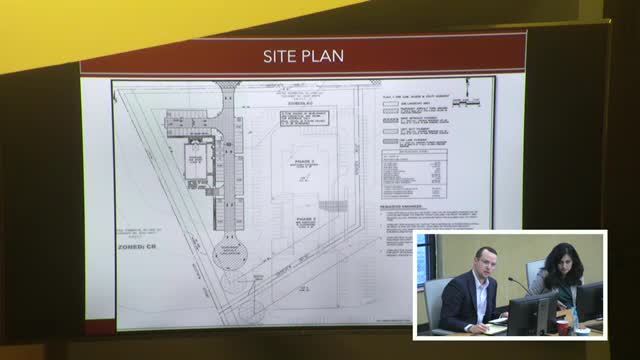Traffic impact analysis sparks debate over church development
October 02, 2024 | Argyle, Denton County, Texas
This article was created by AI summarizing key points discussed. AI makes mistakes, so for full details and context, please refer to the video of the full meeting. Please report any errors so we can fix them. Report an error »

In a recent government meeting, officials discussed the traffic impact analysis (TIA) related to a proposed church development, focusing on its implications for future phases. The analysis indicated that the first phase of the project would generate 99 peak hour trips on Sundays, which is below the town's threshold of 100 trips that would necessitate a full TIA. Consequently, staff concluded that a comprehensive traffic study was not required for this phase. However, they noted that phases two and three, projected to add a total of 1,756 daily trips on Sundays, will require a full TIA when developed.
The discussion also highlighted that the TIA uses average data for churches of similar size, without accounting for specific attendance or the number of services held. This raised concerns among officials about the accuracy of the projections, as they do not reflect the actual usage of the church.
Additionally, the zoning of the land was addressed, confirming that it will remain designated as agricultural (AG) and cannot be changed without further approval from the town council. While non-agricultural uses are permitted under AG zoning, any future developments must comply with existing regulations. The meeting also touched on the potential for accessory uses, such as coffee shops, associated with the church, but clarified that standalone commercial operations would not be allowed.
Lastly, the applicant requested a variance regarding the building's facade to meet the articulation requirements of the office retail zoning standards, which aim to enhance the visual appeal of structures visible from public streets. The outcome of these discussions will shape the future of the church development and its impact on the community.
The discussion also highlighted that the TIA uses average data for churches of similar size, without accounting for specific attendance or the number of services held. This raised concerns among officials about the accuracy of the projections, as they do not reflect the actual usage of the church.
Additionally, the zoning of the land was addressed, confirming that it will remain designated as agricultural (AG) and cannot be changed without further approval from the town council. While non-agricultural uses are permitted under AG zoning, any future developments must comply with existing regulations. The meeting also touched on the potential for accessory uses, such as coffee shops, associated with the church, but clarified that standalone commercial operations would not be allowed.
Lastly, the applicant requested a variance regarding the building's facade to meet the articulation requirements of the office retail zoning standards, which aim to enhance the visual appeal of structures visible from public streets. The outcome of these discussions will shape the future of the church development and its impact on the community.
View full meeting
This article is based on a recent meeting—watch the full video and explore the complete transcript for deeper insights into the discussion.
View full meeting
